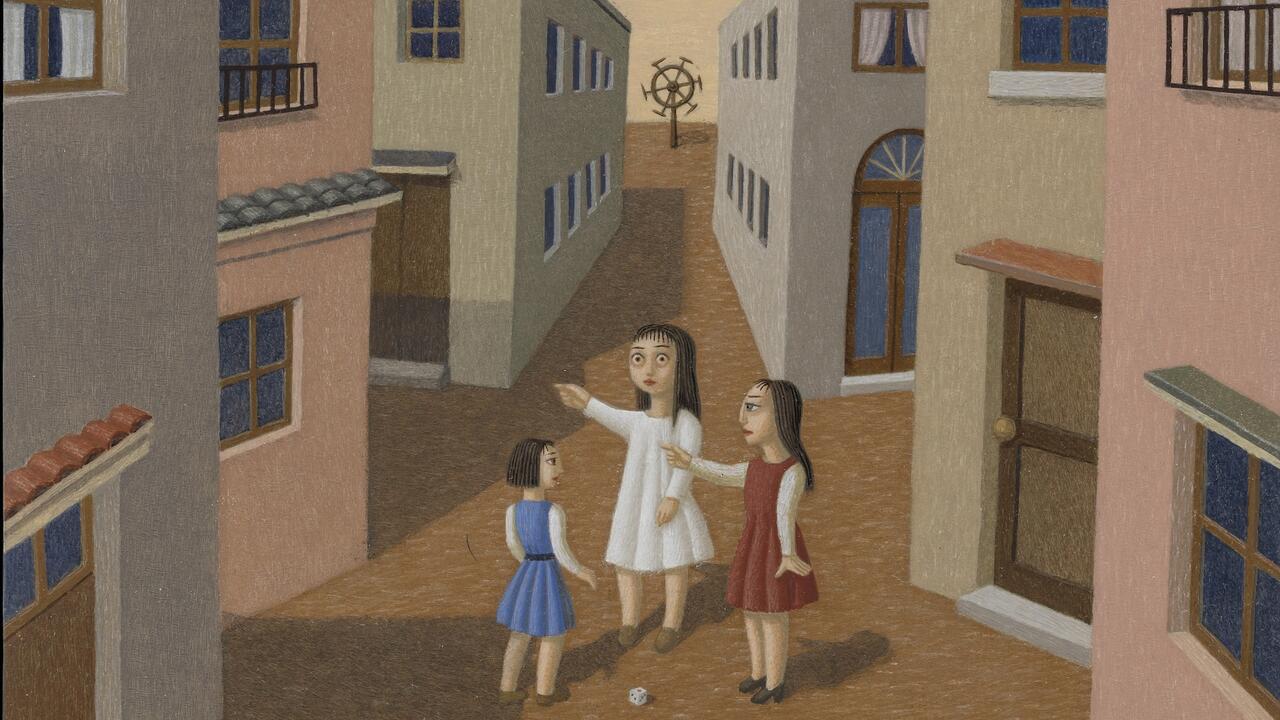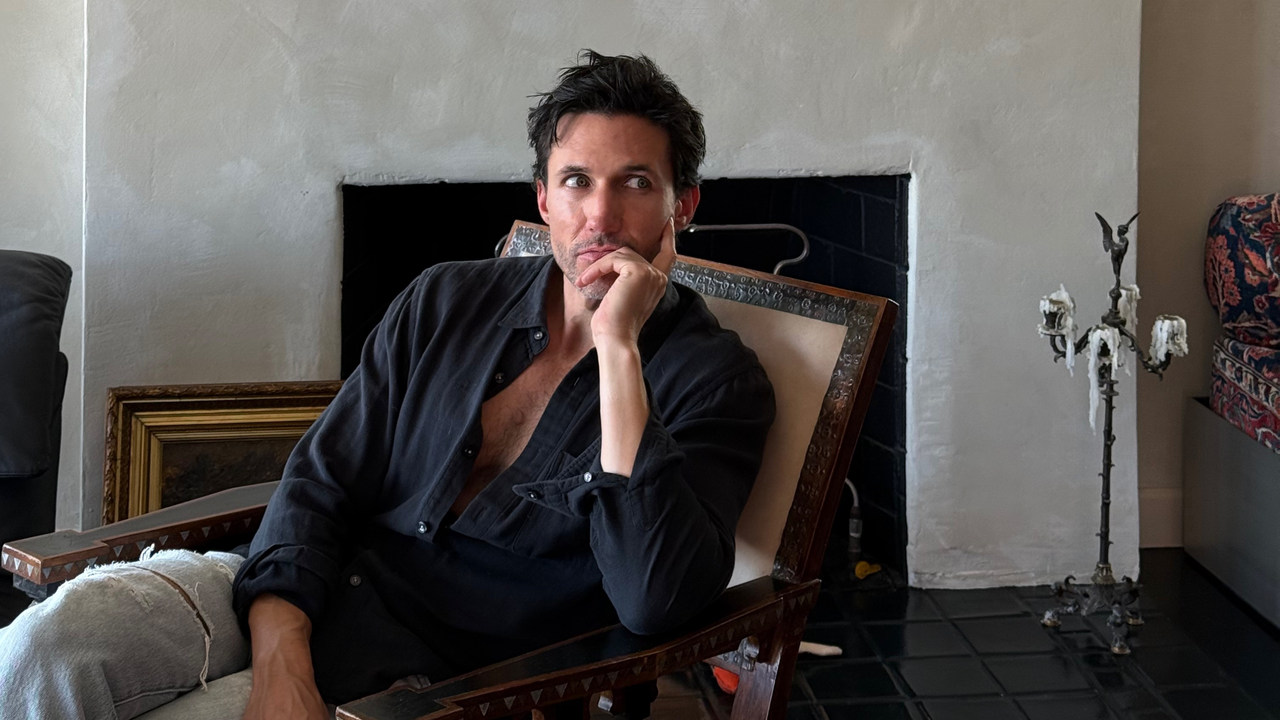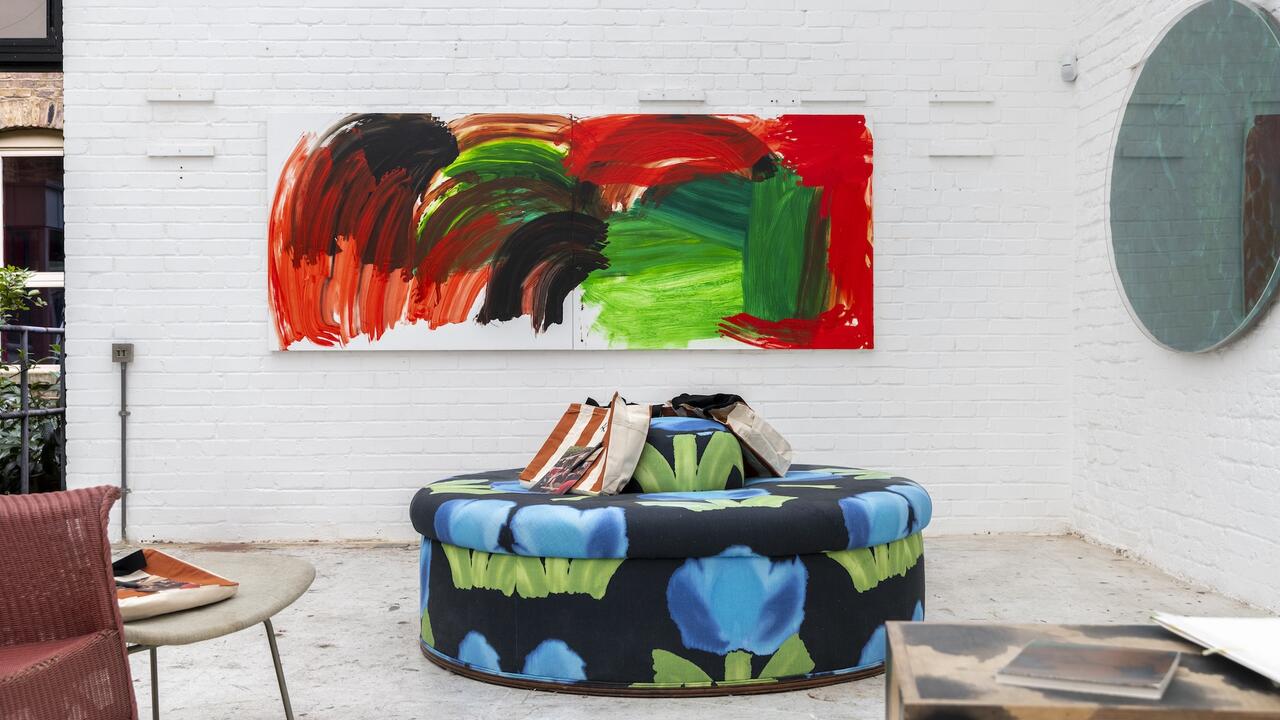Bas Jan Ader
On Bas Jan Ader
On Bas Jan Ader
Rapidly approaching cult status as a kind of Syd Barrett of contemporary art, Bas Jan Ader produced a modest oeuvre that has recently achieved a poignancy all the more relevant given the current concerns of a number of artists, particularly in Britain. Issues revolving around questions of identity, and attempts to resolve the rift between personal experience and the chaos of a larger public world, have risen to the surface amongst a generation (or two) of post-Thatcherite artists. The re-evaluation of Ader's work seems not only inevitable but revelatory in its recasting of much of the work of his own contemporaries as heavy-handed posturing. It is difficult to articulate what it is that makes the work of this artist, whose retrospective could be held in your living room, so powerful and apposite some 20 years on, without overloading individual pieces with an excessive significance, which the work itself tries to shrug off. It is more a question of attitude: the purposefulness with which the works were conceived and executed and the simplicity of their presentation gives them their strength and coherence. Ader himself didn't much care to talk publicly about his work - always a good sign - and when asked, for example, to explain the significance behind the frequent inclusion of 'falls' in his work, he simply replied 'because gravity overpowers me'.
The 'falls' - a number of films and a series of photographic pieces - encapsulate the frailty and vulnerability at the heart of much of Ader's work. Fall (I Los Angeles) (1970), is a short film depicting the artist falling off a chair on the roof of his house and rolling down its slope to the ground. A second film, Fall (II Amsterdam) (1970), shows a view, shot across a canal, of the artist on a bicycle riding carefully down the street and then suddenly losing his balance and disappearing into the water with a large splash. Both films end abruptly after the moment of contact. Untitled (Teaparty) (1972) shares a similar sense of pointed conclusion. In a series of six colour photographs arranged in a column, the camera slowly zooms into a sunlit clearing in a wood where Ader, formally dressed, is taking afternoon tea - in the English style - under a large cardboard box propped up by a stick. The camera zooms out again and in the last frame the stick has come away and the box has fallen to capture the tea-drinker like a mouse in a trap.
The photographic 'falls' made earlier in Holland are some of the few pieces that refer directly to other art: On the Road to a New Neo Plasticism, Westkapelle Holland (1971) shows the artist dressed in black lying in the middle of a cobbled road leading to the lighthouse that provided one of the points of departure for Mondrian's essay into abstraction. The first frame depicts only the artist; in the second he is lying on a square, blue blanket; in the third a yellow plastic petrol can appears in the top left corner and in the fourth a red box is added to create a static Mondrianesque composition of primary colours. A related work, Pitfall on the Way to a New Neo Plasticism, Westkapelle Holland (1971), is a single image that shows the composition in disarray, as if the artist has been tripped up en route, with the blanket in a mess and the objects scattered around the blurred figure of the artist. Broken Fall (Geometric: Blue - Yellow - Red), Westkapelle Holland (1971), again depicts a fall as the artist, standing this time, sways gently and tips over sideways into a trestle - an oblique reference to Mondrian's falling out with van Doesburg over the use of diagonal lines.
The dynamics of composition crop up again in the later pieces Primary Time (1974), and Untitled (Flower Work) (1974), which are film and photographic works depicting the constant reorganisation of a flower arrangement. Yellow, red and (almost) blue flowers in a mixed assortment are constantly swapped and reconfigured until suddenly they are composed entirely of flowers of one colour. The strangest thing about the progression is that its consequence is not obvious: in the lead up to the red arrangement for example, red flowers are added and removed apparently as often as the other colours. Like a conjuring trick, you are only aware of what is going on at the moment it happens and it is too late to try and track down the process that brought you there.
This constant adjustment and reincarnation of ideas in multiple works is characteristic: I'm Too Sad to Tell You (1970), a frontal image of the artist's tear-stained face, was produced as a postcard, a film (twice) and as an editioned photographic work. Each version has a slightly different feel and sense of purpose. The postcard was sent out in bulk to his friends like an On Kawara telegram but without the sense of abstraction inherent in a statement as blunt as 'I am still alive' - which really doesn't tell you very much at all. Ader complained about the difficulty of making the work - of being in the right state of mind to perform the piece. The reason for his (real) crying is 'a secret' known only by close friends but it is apparently important we know that there is a reason. In fact, most of Ader's work plies between the intensely personal and the incredibly arbitrary without ever being strictly narrative. All My Clothes (1970), is an equally melancholy work whose title says it all: the artist's worldly vestments laid out with a kind of half-care on the roof of his Los Angeles house like the last vestiges remaining on a beach of a swimmer out at sea.
The sense of departure is a recurrent theme, the recurrent theme, in Ader's entire output. Farewell to Faraway Friends (1971) presents the artist at the edge of a large body of water as if on the cusp of a decision. The feeling is melodramatic and the image kitsch in the true picture-postcard tradition: Kodachrome colours with a solitary figure silhouetted against the water so that it is impossible to tell whether the figure is facing towards or away from the viewer. The conventions of the picture are obvious and the emotional content almost one-dimensional, but, surprisingly, the work still has the power to move - perhaps because of the very transparency of its language and the modesty of its aspirations. In a similar manner, In Search of the Miraculous (One Night in Los Angeles) (1973) offers 14 night views of urban blandness: a freeway, an underpass and suburban houses emerge out of the blackness under the glare of streetlighting. Scribbled at the bottom of each image are the lyrics to a song by the Coasters:
Yeh, I've been searchin'
I've been searchin'
Oh yeh, searchin every which way
Oh yeh, searchin
I'm searchin'
Searchin every which way...
Just visible in each of the frames is the small figure of the artist, Maglite™ in hand (the biggest torch in the range), searching for miracles. The work is immediately comic and pathetic: comic in the absurdity of the action itself and in the fact that it is being carried out to the accompaniment of song lyrics - dead in the water as they inevitably appear when stripped of phrasing and intonation - and pathetic in terms of the intensity of the misguided endeavour. But as always there is a deeper side to the work. The title is lifted from P.D. Ouspensky's book of the same name on the early teachings of Gurdjieff - the story of another quest for spiritual understanding and self-knowledge that started out as a physical search (travelling in the Orient) but which ended with the realisation that the answer had been at hand all the time. The final frame of the piece shows the artist alone on the beach, torch extinguished, with the lights of Los Angeles crackling in the background - time to go home. Two years later, in the second part of the proposed three part work of which In Search of the Miraculous (One Night in Los Angeles) was the first, Ader disappeared at sea whilst making a solo crossing of the Atlantic - only the remnants of his boat were recovered.
There is a strong sense that Ader's art really had to mean something for him to feel it was worth bothering with. Virtually ignored by his contemporaries in Los Angeles, though this seems to have troubled him not a whit, and reluctant to enter into the fray of the art scene, Ader just got on with it when there was something to get on with: there are years when no work was produced and the artist spent his time teaching philosophy, restoring cars and speculating in the commodity futures market. Perhaps this is how it should be.
Honeycutt grabbed Roger's arm, fighting to hold the boy's head out of the water. But the furious currents tore them apart. The rapids wrenched Roger down, spun him around. Then all at once he was free, thrust out over the edge of the falls, dropping through space.
-from the performance The Boy Who Fell Over Niagara Falls, 1972
In 1975 Bas Jan Ader set sail from Cape Cod hoping, among other things, to break the world record for the smallest one-man transatlantic crossing. The trip, modelled after the man versus nature type pilgrimage most often found in boys' magazines, was aptly entitled In Search of the Miraculous. Equipped with a camera and tape recorder, Ader planned to document his survival at sea as the completion of a three part project. Months after his departure a Spanish trawler found the wreckage of his boat about 150 miles west of the coast of Ireland. Somewhere between the glimmer of Hemingway and Dylan Thomas, Bas Jan Ader disappeared.
I would imagine that Ader, the collector of survival stories, was a big Jack London fan. I wonder if, at the point when his boat overturned, he remembered the boy fished out of the sea and put to work by London's iconic captain, Wolf Larson. And for a brief moment maybe Bas Jan Ader became the galley slave; the property of gigantic men with yellow eyes and yellow teeth who blocked his way as he passed by with steaming pots of slop. Ader's boat drops and rises in sky-dyed water. There is no body, no note. Carollers enlisted by the artist to sing shanties by the shore wait the long wait of sailor's wives.
While Ader's mysterious vanishing reads like a fable, it stands as a conclusion to a project that revolved around the risk of death. The concept behind the Search was the undertaking of a physical exercise, free from the safety of land, in order to access a spiritual meeting that could deliver the romance of survival in its purest sense. The fact that Ader failed to complete the journey has little bearing on the success of a project that never hinged on making it across the Atlantic, but on trying to make it.
The crossing was many things, but principally a test of Ader's own loyalty to the myths of machismo. Much of Ader's work comprises of rituals that are undertaken to question the expectations placed on the male body. The dilemma for Ader is how earnestly one can critique that with which one is still enamoured. His work wavers between a deconstruction and a mimicry of heroic movement. This territory was virgin at the time - here was a man blindly swatting flies, debunking a notion that hadn't really been contemplated by the (male) art community. As it stands, Ader has become the myth he studied so earnestly, a quixotic figure enmeshed in an aura that comes dangerously close to eclipsing the photographs, drawings, films and documentation he left behind.
Bas Jan Ader's work proposes the artist as Greek tragic hero. While Gordon Matta-Clark cut holes in buildings with a chainsaw, Ader was in pastel California falling, waving and weeping. His work split open, with a ticklishly soft touch, his own illusions of masculinity and the fictions that they promote. While Matta-Clark was heroic, Bas Jan Ader was Hero, the grief-stricken priestess who drowned herself in the Hellespont.
Imagine there is a man hanging by two hands from a tree. It's a beautiful day, the sun is bleaching out the foliage and your eyelids seem translucent, so that you think you can see the man, even though your eyes are closed. In Broken Fall (Organic) (1971), Ader swings, struggles and bounces, pauses, then kicks once more as he tries to keep afloat in the air. Realising the futility of his effort he stops kicking. His weight begins to creep down his legs, elasticising them until they dangle like the branch he pulls on. Then he falls into a stream.
In a Keatonesque version of the 'organic' fall, a brick pedestrian path replaces the stream. Although one is solid, they are similar in form and both conjure up images of travel and escape. On the horizon is the top half of the lighthouse that played stationary muse for Mondrian, for whom the piece is a strange homage. It's a windy day, evidenced by a graceful rocking of the treetops. Ader stands next to a wooden sawhorse and begins to sway, then to tilt, trying to avoid the very pull of gravity he seems to crave. The anticipation builds as he pitches, like Buster Keaton in The Navigator, towards the sawhorse. Broken Fall (Geometric: Blue - Yellow - Red), borrows its movements from slapstick and underlines the melancholia behind the comic's search for the great laugh. Eventually Ader's physical mantra sends him crashing over the prop, and the prop over Ader. He falls and the film is over.
With the 'fall' films, Ader directs his body through a series of movements that look nothing like sex, but share the same breathing tempo, the mount and plateau, of footage more carnal in nature. One might say the same of Matthew Barney's videos, which although perhaps more self-conscious, use athletic postures to summon up sexual positions. Barney and Ader both struggle against gravity in front of a camera, wrestling with the conceit of a masculine glamour. For Barney the spectre of machismo is momentarily abandoned, while Ader reaches out but fails to grasp it. One man falls and another dons high heels in an attempt to derail a certain brand of heroism. Unlike Barney, though, in Ader's work no glorified image to counterbalance his failure is left behind. Ader is rarely drunk from the scent of his own body, as Barney sometimes is, but rather, in a very heterosexual way, is haunted by the feats of other men, men like Barney's torn up football hero Otto; men who win.
Ader may be historically bound to Turrell, Nauman, Leavitt, Ruppersburg and others, but more than any of his contemporaries, his work has the pace and nuances of artworks made in the late 80s and 90s. The black and white stills of Ader's falls could easily be the visual components of stories by Hervé Guibert or David Wojnarowicz. His images are blanketed by a self-imposed silence. All you need to know, Ader seems to suggest, is to know enough not to ask. Over and over in a group of installations, perhaps in response to formalist sculpture, he hung blocks of concrete perilously above fragile objects: lights, pillows, eggs, flowers; even one above a painting of a woman he may or may not have known. The blocks imply a hierarchy of power, and the weight and press of concrete upon the petals or eggshells look like a conceptualist's idea of a sexual conquest. With Ader's work, one is not quite sure whose metaphoric body is being endangered.
It is hard to know what Ader would have thought about being inserted into a span of time defined by a disease, although my guess is that he might have seen AIDS as the last and greatest battle. I'm sure he would have recognised Guibert, Wojnarowicz and Mark Morrisroe, other men who died young, but maybe that would be all they had in common. Ader's wooing of doom, his need to flee an invisible perpetrator and the random mistreatment of his body reminds me of Jack Pierson and Robert Gober and a 90s artmaking that's more investigative than referential. In the film I'm Too Sad To Tell You (1970), Ader sits on a chair and cries. And cries. This piece, like a few others, teeters on a Sylvia Plath-like embrace of despair that is often most resonant to teenagers. And yet, because Ader is a man, we are ready and willing to accept the pull of an outdated melancholia.
Ader fills the requirement of 70s conceptualism by repeating in lieu of explaining, but he also manages, through the slightest variations in expression, to implant a plot that is not universal, but personal. The photograph All My Clothes (1970) is a perfect example. Ader spreads his wardrobe across the roof of a modest house. His body is in a state of flux and the picture details a scenario of detachment and departure. This same sense of transience is echoed in the film Fall (I Los Angeles) where Ader topples off the roof of this same suburban ranch house. When Matta-Clark split a house in New Jersey, he chose a communal house. Splitting (1974) finds its power as an image because it startles, but also because the house was ours. While the stills of Ader's house locate him close to Matta-Clark in time, they feel more like Robert Gober's split dollhouses made in 1978. In his little world, the locus of normality is fraught with accidents. Hints of something amiss, something left unsaid, spill from gestures that are as comic as Vaudeville tragedies. It is his fall, or the possibility of failure, that maintains a safe distance between Ader and the unheroic everyday.














